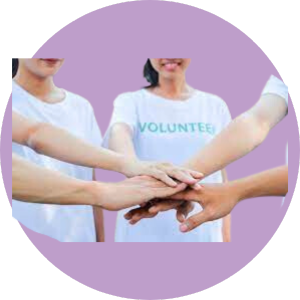
By Jamey Sheesley
Escalation in abusive relationships is very dangerous. Victims tend to experience a steep increase in the abuse as part of the abusive cycle or if they find any sort of independence from their abusive partner.
What is the cycle of abuse?
Even though every abusive relationship is different, there is always a cycle. The first part of the cycle is when you meet your abusive partner. They never show their abusive side right away and usually hook you in before they start the next phase of the cycle.
After this initial manipulation, abusers move into the next stage, which is the tension building stage. In this stage, the abuser will start to create tension by picking at the victim. Tension can be built in many different ways, including accusing the victim of wearing something too scandalous; making snide comments about the victim, or anything that makes the victim feel insecure. Many times the victim will start to feel on edge or fearful because of the change in atmosphere.
Communication in the relationship often breaks down at this point, as well. This phase can last anywhere from a day to weeks. Escalation begins in this stage.
The next stage in the cycle is the “acting out” stage or the abusive stage. This is where the escalation comes into full effect. This is where physical violence tends to happen. If a victim has only experienced emotional abuse from their abuser, this is the stage where it might rise to the next level and become physical. All forms of abuse, including emotional, financial, sexual, and physical, get worse during this stage.
What is “escalation?”
According to The National Domestic Violence Hotline, there are two different types of escalation. The first type is gradual escalation. Gradual escalation is where the abuser will make comments that become more hurtful over time. The second type of escalation is sudden escalation. Sudden escalation is when the abuse suddenly becomes more severe, like an emotionally abusive partner becoming physically abusive for the first time.
Full escalation is a dangerous time for the victim because the abuser is using violence to show the power they have over the victim. The abuser wants to show the victim what can happen if the they disobey. The abuser is trying to gain all power back, especially if the victim has shown some sort of independence. This is especially likely when the victim is trying to leave the relationship. According to The National Domestic Violence Hotline, 75% of injuries in abusive relationships happen when the victim tries to end the relationship.
Why should I safety plan?
It is good to have a safety plan if you are planning to leave an abusive relationship. Please take all precautions when leaving an abuser. According to Love is Respect and Huffington Post, some safety plan tips include:
- Documenting everything that is happening, including taking photos of any injuries,
- Creating a safety network of friends and family and letting them know your plans,
- Going to the emergency room and documenting injuries,
- Finding a safe place for your children to go during abusive incidents (like going to a separate room or staying with a friend or family member),
- Contacting local shelters if you need a place to stay or visit WomensLaw.org for state-by-state legal action,
- Trying to set money aside and having a trusted family member or friend hold it for you.
If you are experiencing escalation, chances are it is not your first time seeing your abuser do this. Every relationship is different so each victim may have different strategies on keeping the abuser calm during this stage. Since this is a very dangerous part of the cycle, it is very important to keep yourself and your children safe, whatever that means for you. You are the expert on your own safety, so take every precaution you can when creating your safety plan. If you know the best time to leave is when the abuser is not around, then leave when they are gone. Do not wait around, get out.
It is important to get out before it is too late. Many times as each cycle happens, the abuse continues become more violent in order to establish power and control. The escalation of abuse can also change each cycle. Sometimes the escalation is gradual, but other times it is sudden. That is why it is important to create a safety plan and get out as soon as possible. Trust your “gut” instincts and get away so you can start living your life away from the abuse cycle.
If you or someone you know is in an abusive relationship, there is help. You can visit the Break the Silence website at www.breakthesilencedv.org or chat with one of our helpline advocates at 855-287-1777.








